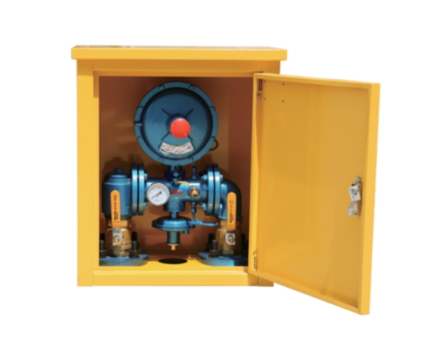
10 月 . 20, 2024 00:30
Back to list
pressure vessel
Understanding Pressure Vessels Design, Safety, and Applications
Pressure vessels are critical components in various industrial processes, serving a key role in the containment of gases or liquids under pressure. These specialized containers are engineered to withstand high internal pressures, making them essential in fields ranging from chemical processing and oil and gas production to the aerospace industry. Understanding the design, safety considerations, and applications of pressure vessels is crucial for engineers and industry professionals alike.
Design Principles of Pressure Vessels
The design of a pressure vessel must adhere to stringent engineering principles and regulatory standards. Typically constructed from materials such as carbon steel, stainless steel, or reinforced plastics, these vessels must be both strong and durable to prevent structural failure. The design process starts with determining the maximum allowable working pressure (MAWP) and the temperature conditions the vessel will experience.
Common design codes and standards, such as the ASME Boiler and Pressure Vessel Code in the United States, provide guidelines for safe design, construction, inspection, and testing. Key aspects of pressure vessel design include
1. Geometry Most pressure vessels are cylindrical or spherical in shape, as these geometries minimize stress concentrations and provide even distribution of pressure forces. 2. Thickness and Reinforcement The wall thickness of a pressure vessel is calculated based on the internal pressure and the material's strength. Reinforcements may be necessary, especially around openings such as nozzles or manways.
3. Stress Analysis Engineers perform detailed stress analyses to ensure that the vessel can handle internal pressure without yielding or buckling. Finite element analysis (FEA) is a common computational method used to predict how the vessel will respond under various loading conditions.
Safety Considerations
Safety is paramount when dealing with pressure vessels due to the potential hazards associated with high-pressure operations. Failures can lead to catastrophic events, resulting in damage to equipment, injury to personnel, and environmental harm. Consequently, several safety measures are implemented throughout the lifecycle of a pressure vessel
1. Material Selection The choice of material is critical, considering factors such as corrosion resistance, temperature tolerance, and structural strength. Advanced materials like titanium or composite materials are often chosen for specific applications.
2. Regular Inspections Routine inspections and maintenance are essential for identifying potential weaknesses or signs of wear and tear. Common inspection techniques include ultrasonic testing, radiography, and visual inspections.
pressure vessel

3. Pressure Relief Systems Safety valves and rupture disks are installed to prevent excessive pressure buildup, providing an avenue for release in case of overpressure conditions.
4. Compliance with Regulations Adherence to legal and regulatory standards ensures that pressure vessels are designed, manufactured, and operated within established safety parameters. Non-compliance can lead to severe penalties and increased liability risks.
Applications of Pressure Vessels
Pressure vessels are utilized in an array of industries, each with distinct requirements and applications
1. Chemical Industry In chemical manufacturing, pressure vessels are used for storage and processing of reactive substances under controlled conditions. They play a vital role in reactors, distillation columns, and storage tanks.
2. Oil and Gas Sector High-pressure and high-temperature conditions in the oil and gas industry necessitate robust pressure vessels for applications such as separators, compressors, and storage tanks.
3. Food and Beverage Sterile environments are critical in food processing. Pressure vessels are employed in pasteurization and carbonation processes, ensuring food safety and quality.
4. Power Generation In power plants, boilers and other pressure vessels are integral to steam generation and management, contributing to overall energy efficiency.
Conclusion
Pressure vessels are essential components in a multitude of industrial applications, providing safe and efficient containment of pressurized substances. Through careful design, rigorous safety standards, and regular maintenance, industries can mitigate risks associated with high-pressure operations. As technology advances, the ongoing development of materials and engineering practices will further enhance the safety and efficiency of pressure vessels, solidifying their indispensable role in modern industry. Understanding their design principles, safety measures, and applications is crucial for professionals working in fields that rely on these vital systems.
Next:
Latest news
-
Unlocking The Quality Gas Pressure ReducersNewsNov.01,2024
-
The Role of Gas Pressure Reducing StationsNewsNov.01,2024
-
The Importance and Functionality of Safety Relief ValvesNewsNov.01,2024
-
The Essential Role of Safety Valves in Natural Gas ApplicationsNewsNov.01,2024
-
The Essential Role of Gas Pressure RegulatorsNewsNov.01,2024
-
Enhance Your Premium Gas FiltersNewsNov.01,2024

